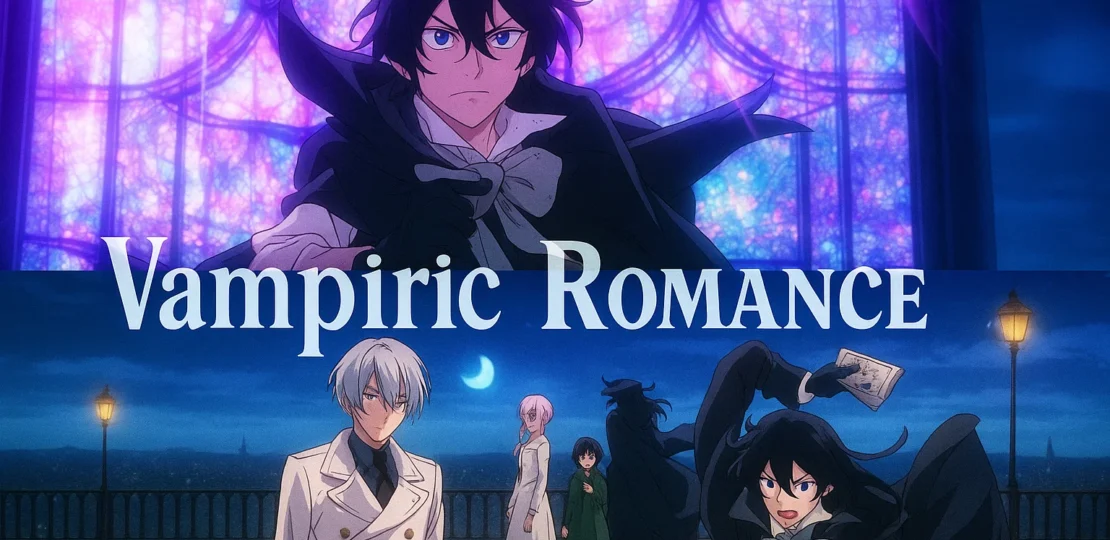
In the vast landscape of anime, vampire-themed series have long captivated audiences with their blend of supernatural intrigue, gothic aesthetics, and explorations of immortality, desire, and humanity. From the blood-soaked battles of Hellsing Ultimate to the romantic entanglements of Vampire Knight, the genre has produced iconic works that define dark fantasy. Yet, amid these classics, one series stands out as a masterpiece that redefines what vampire anime can be: The Case Study of Vanitas (Vanitas no Carte). Created by Jun Mochizuki, the mind behind Pandora Hearts, this 2021-2022 anime adaptation by Studio Bones is not just another entry in the vampire canon—it’s the pinnacle. Through its innovative world-building, deeply nuanced characters, intricate plotting, stunning visuals, and profound thematic depth, The Case Study of Vanitas surpasses its peers, offering a fresh, emotionally resonant take on vampires that balances humor, horror, and heart. In this article, we’ll delve into why it earns the title of the best vampire anime of all time.
A Unique Steampunk World That Reinvents Vampire Lore
What sets The Case Study of Vanitas apart from the outset is its richly imagined alternate history. Set in a steampunk version of 19th-century Paris, the series weaves vampires into a world of mechanical wonders, airships, and clockwork contraptions. This isn’t the typical shadowy castles or modern urban settings seen in series like Blood+ or Shiki. Instead, vampires coexist uneasily with humans following a devastating war, with the crimson moon—Babel—casting a literal and metaphorical shadow over their existence. The curse of the “Malnomen,” which corrupts vampires’ true names and turns them into mindless beasts, adds a layer of tragedy and mystery that’s absent in more action-oriented vampire tales.

This world-building is masterful, drawing from real historical elements like the French Revolution and Victorian-era aesthetics while infusing them with fantastical elements. Unlike Hellsing, where vampires are often monstrous antagonists, or JoJo’s Bizarre Adventure, where they’re superpowered villains, Vanitas portrays vampires as a marginalized society grappling with identity and prejudice. The series explores how folklore and science intersect, with the titular Book of Vanitas—a grimoire that can rewrite true names—serving as a tool for salvation rather than destruction. Reviews praise this fresh approach, noting how it combines old-fashioned tropes with modern sensibilities. This innovation elevates the genre, making the supernatural feel grounded and relevant.
Compare this to Vampire Hunter D: Bloodlust, a stunning film but limited in scope, or Castlevania, which leans heavily on video game roots. Vanitas builds a living, breathing universe where every detail—from the ornate costumes to the bustling Altus (the vampire realm)—serves the story. It’s a world that invites immersion, making viewers feel the chill of Parisian nights and the weight of eternal life.
Compelling Characters That Drive Emotional Depth
At the heart of any great anime are its characters, and The Case Study of Vanitas excels here with a cast that’s complex, relatable, and unforgettable. The protagonists, Vanitas and Noé Archiviste, form one of the most dynamic duos in anime. Vanitas, a human doctor wielding the Book of Vanitas, is charismatic, flirtatious, and deeply scarred, hiding vulnerability behind a facade of eccentricity. Noé, a kind-hearted vampire with a thirst for knowledge, provides the moral compass, his innocence contrasting Vanitas’s cynicism. Their relationship—part bromance, part philosophical clash—is the series’ emotional core, blending banter, tension, and genuine affection.

Supporting characters like Jeanne, the stoic Hellfire Witch, and Dominique de Sade add layers of romance and intrigue. Mochizuki’s writing shines in revealing backstories through flashbacks, humanizing even antagonists. This depth surpasses the archetypal heroes in Trinity Blood or the one-dimensional love interests in Rosario + Vampire. Fans highlight the quirky, fun dynamics that make the show stand out. Unlike Hellsing‘s Alucard, who’s an unstoppable force, Vanitas is flawed and human, making his growth more impactful.
The series also tackles themes of trauma and redemption with sensitivity. Noé’s archive abilities allow peeks into memories, uncovering pains that resonate on a personal level. This emotional intelligence sets Vanitas apart from gore-focused entries like Shiki, where horror overshadows character development.
An Intriguing Plot That Balances Mystery, Action, and Humor
The Case Study of Vanitas weaves a narrative that’s equal parts detective story, adventure, and drama. The plot follows Vanitas and Noé as they cure cursed vampires while unraveling a conspiracy involving the Charlatan organization. Each episode builds suspense, with twists that keep viewers guessing. The episodic cases—curing individual vampires—serve as gateways to larger arcs, similar to Cowboy Bebop but with supernatural stakes.
What truly elevates the plot is its tonal balance. Dark moments of horror and betrayal are offset by comedic interludes, like Vanitas’s over-the-top flirtations or chibi-style gags. This mix prevents the series from becoming overly brooding, a pitfall of Blood+. Analyses note how it errs on edgy when needed but pulls back with humor. The themes of identity, love, and the nature of curses delve deeper than surface-level vampire lore, questioning what it means to be “cursed” in society.
In comparison, Vampire Knight focuses on romance but lacks the mystery depth, while JoJo’s vampire arcs are action-packed but episodic. Vanitas integrates everything seamlessly, culminating in emotional payoffs that linger long after viewing.
Stunning Animation and Soundtrack That Enhance Immersion
Produced by Studio Bones (Fullmetal Alchemist, My Hero Academia), The Case Study of Vanitas boasts animation that’s a visual feast. The fluid fight scenes, detailed backgrounds, and expressive character designs capture the steampunk gothic vibe perfectly. Color palettes shift from vibrant Parisian streets to ominous red moons, enhancing mood. Reviews call it gorgeous, with crisp art distinguishing lore from reality.
The soundtrack, composed by Yuki Kajiura (Sword Art Online), blends orchestral pieces with electronic elements, evoking tension and romance. Opening themes like “Sora to Utsuro” by Sasanomaly set a mysterious tone, while voice acting—Natsuki Hanae as Vanitas and Kaito Ishikawa as Noé—brings characters to life.
This production quality outshines older classics like Hellsing Ultimate, whose animation, while iconic, feels dated. Vanitas uses modern techniques to make vampires feel alive and the world tangible.
Comparisons to Other Vampire Anime: Why Vanitas Reigns Supreme
To crown The Case Study of Vanitas the best, let’s compare it to top contenders. Hellsing Ultimate is a gorefest with memorable action, but it lacks emotional depth. JoJo’s Bizarre Adventure features Dio, an iconic vampire, but vampires are secondary to stands. Blood+ offers epic scope but drags with pacing issues. Vampire Hunter D: Bloodlust is visually stunning yet a single film, not a series. Castlevania excels in animation but adheres to game tropes. Shiki delivers horror but misses humor. Vampire Knight prioritizes romance over plot coherence. Trinity Blood has world-building but uneven execution. Rosario + Vampire is fun fanservice without substance. Karin is light-hearted but forgettable.
Vanitas synthesizes the best elements: action from Hellsing, mystery from Shiki, romance from Vampire Knight, and innovation all its own. User lists often rank it highly for its freshness. It’s not just good—it’s transformative.
Impact and Legacy in the Anime Community
Since its release, The Case Study of Vanitas has garnered a dedicated fanbase, inspiring cosplay, fan art, and discussions on themes like mental health and prejudice. Its manga continues, promising more adaptations. In a genre saturated with tropes, it proves vampire stories can evolve, influencing future works.
Critics and fans alike call it a must-watch, with high scores on MyAnimeList and positive reviews emphasizing its heart and mystery. Its legacy is one of reinvention, showing that the best anime push boundaries.
Conclusion: A Timeless Masterpiece
The Case Study of Vanitas is the best vampire anime because it transcends the genre’s conventions, delivering a story that’s intellectually stimulating, emotionally profound, and visually breathtaking. In a world of eternal nights, it shines brightest, reminding us why we love anime. Whether you’re a longtime fan or new to vampires, this series is essential viewing
RELATED POSTS
View all


